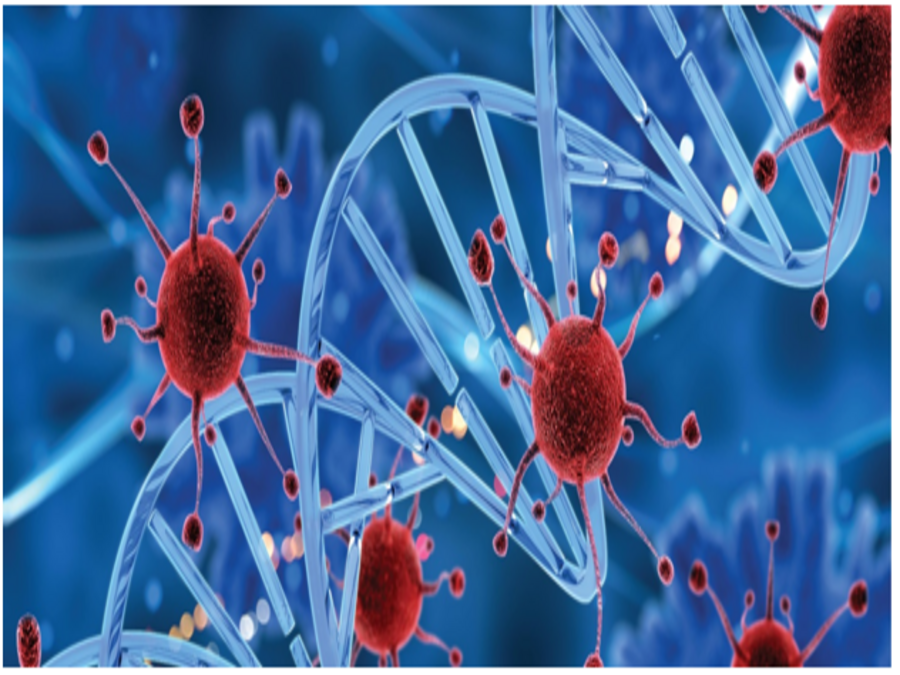Cancer Drugs
Approximately 18.1 million new cases of cancer are reported worldwide each year, making it the second leading cause of death in the United States. The country witnesses over 1.7 million new cancer diagnoses annually. Although cancer is often simplistically portrayed, it is a complex group of diseases. While uncontrolled cell growth unites them, various factors contribute to the development of cancer in diverse ways. Some of these factors are inherited, while others are encountered over the course of life. The disease can be classified into numerous distinct types based on the originating cell. Furthermore, when considering each patient’s genetic makeup, no two cases of cancer are exactly alike.
The problem
In 2020, cancer was responsible for causing nearly 10 million deaths worldwide, solidifying its position as a significant contributor to global mortality (1). The most common in 2020 (in terms of new cases of cancer) were:
- breast (2.26 million cases);
- lung (2.21 million cases);
- colon and rectum (1.93 million cases);
- prostate (1.41 million cases);
- skin (non-melanoma) (1.20 million cases); and
- stomach (1.09 million cases).
The most common causes of cancer death in 2020 were:
- lung (1.80 million deaths);
- colon and rectum (916 000 deaths);
- liver (830 000 deaths);
- stomach (769 000 deaths); and
- breast (685 000 deaths).
Roughly 400,000 children are diagnosed with cancer annually. The prevalent types of cancer differ across nations, with cervical cancer emerging as the foremost occurrence in 23 specific countries.
Causes
Cancer originates through the transformation of normal cells into tumor cells, following a multi-stage progression that generally evolves from pre-cancerous lesions to malignant tumors. These alterations result from the interplay between an individual’s genetic factors and three distinct categories of external agents, which encompass:
- Physical carcinogens, including ultraviolet and ionizing radiation.
- Chemical carcinogens, such as asbestos, components found in tobacco smoke, alcohol, aflatoxin (a contaminant in food), and arsenic (a contaminant in drinking water).
- Biological carcinogens involve infections caused by specific viruses, bacteria, or parasites. The World Health Organization (WHO) maintains a classification of cancer-causing agents through its cancer research entity, the International Agency for Research on Cancer (IARC).
Risk factors
Tobacco usage, alcohol consumption, poor dietary habits, lack of physical activity, and environmental air pollution all contribute as risk factors not only for cancer but also for other non-communicable diseases. Chronic infections also pose a risk for cancer, which is particularly concerning in low- and middle-income nations. Around 13% of cancer cases reported globally in 2018 were linked to infections with carcinogenic agents, including Helicobacter pylori, human papillomavirus (HPV), hepatitis B virus, hepatitis C virus, and Epstein-Barr virus.
Hepatitis B and C viruses, along with specific strains of HPV, heighten the vulnerability to liver and cervical cancer, respectively. Furthermore, HIV infection amplifies the risk of cervical cancer by six-fold and substantially raises the likelihood of encountering certain other cancers like Kaposi sarcoma.
Top of Form
New Nanoparticle Research in Glory Lily for Cancer Treatment
Recent research has focused on utilizing the glory lily, known as “senganthal” and the state flower of Tamil Nadu, for potential applications in cancer treatment. Two assistant professors from Bharathiyar University have successfully developed silver nanoparticles using the tuber (kilangu) of the glory lily for the purpose of creating cancer drugs. This innovative approach has led to the grant of a patent for their work.
The glory lily tuber contains a nanoparticle called colchicine, which possesses anti-cancer properties by hindering cell multiplication. To facilitate its incorporation into a Nano formulation, the researchers combined the colchicine extracted from the tuber with silver nitrate. Through specific adjustments and the addition of chemicals, they successfully generated silver nanoparticles. These nanoparticles exhibit specialized capabilities for delivering drugs precisely to the microenvironment of cancer cells, enabling controlled and targeted release of medication.
Despite the glory lily’s toxic nature, it has yielded valuable medicinal substances for Ayurvedic treatments. Historically, its juice extract was utilized to counteract snake bites and to induce abortions. Excessive consumption, however, has the potential to be lethal to humans. The assistant professor emphasized that direct consumption would harm normal cells and prove ineffective against cancer cells.
The produced silver nanoparticles are characterized by their uniform size and minuteness. They possess the ability to stimulate natural killer cells in the human body, leading to the elimination of cancer cells. This invention holds promise for a range of applications in the biomedical domain, including antimicrobial coatings, drug delivery systems, diagnostic tools, wound healing, cancer therapies, biosensors, bone tissue engineering, and immunomodulation. The unique properties of these nanoparticles make them versatile tools in various fields within the biomedical realm.
Source:
https://www.cancer.gov/about-cancer/treatment/drugs
https://www.cancer.gov/about-cancer/treatment/drugs/cancer-type
https://www.cancerresearchuk.org/about-cancer/treatment/drugs

